2023 Monarch Watch summary
Monday, January 1st, 2024 at 2:41 pm by Jim LovettFiled under General | Comments Off on 2023 Monarch Watch summary
Season’s Greetings from Team Monarch Watch!
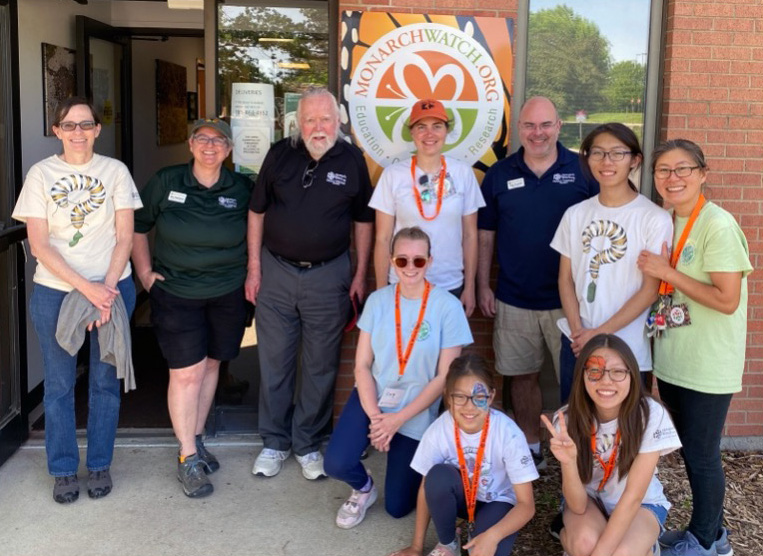 You are an important part of our team as well. Your interest shows that you are aware of the need to sustain the monarch migration, and that means advocacy for all measures that can be taken to increase monarch numbers. Stated simply, we need to get plants in the ground – specifically milkweeds and nectar plants that support the breeding population and fall nectar plants that support the migration. The challenge is substantial and difficult to navigate. The climate is changing; we can see that in the data. March temperatures in Texas are becoming too warm, allowing monarchs to fly too far north too soon. In addition, high September temperatures are slowing the migrations, leading to fewer monarchs reaching the overwintering sites in Mexico. These sites also face threats due to droughts, beetle damage and illegal logging. While there is not much we can do to counter some threats, we can create Monarch Waystations, restore habitats, and inspire stewardship in the younger generations. These actions represent our mission at Monarch Watch, and we are grateful for your continued support.
You are an important part of our team as well. Your interest shows that you are aware of the need to sustain the monarch migration, and that means advocacy for all measures that can be taken to increase monarch numbers. Stated simply, we need to get plants in the ground – specifically milkweeds and nectar plants that support the breeding population and fall nectar plants that support the migration. The challenge is substantial and difficult to navigate. The climate is changing; we can see that in the data. March temperatures in Texas are becoming too warm, allowing monarchs to fly too far north too soon. In addition, high September temperatures are slowing the migrations, leading to fewer monarchs reaching the overwintering sites in Mexico. These sites also face threats due to droughts, beetle damage and illegal logging. While there is not much we can do to counter some threats, we can create Monarch Waystations, restore habitats, and inspire stewardship in the younger generations. These actions represent our mission at Monarch Watch, and we are grateful for your continued support.
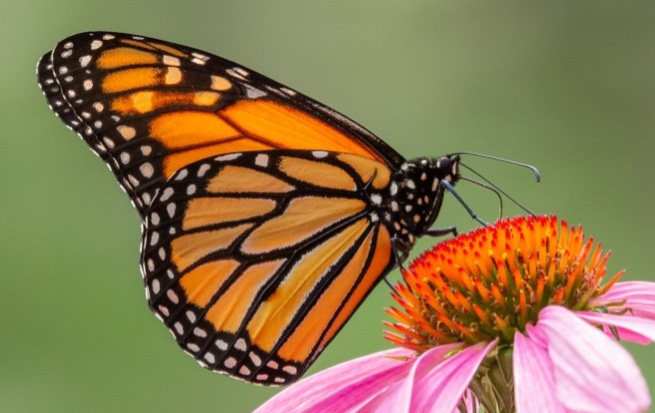 Monarchs have a remarkable annual cycle – a breeding season in the U.S. and Canada and a non-breeding season as they overwinter for 5 months in Mexico. In effect, every year is the same, yet every year is different due to weather and other factors that influence reproductive success. We have a similar rhythm at Monarch Watch. Winter is spent catching up, writing, and planning for the next season, including our Spring Plant Fundraiser. Late spring and summer we work with nurseries to distribute milkweeds. Fall is all about tagging and public events and later seed collecting and processing followed by planning the number of milkweeds to be grown the next year.
Monarchs have a remarkable annual cycle – a breeding season in the U.S. and Canada and a non-breeding season as they overwinter for 5 months in Mexico. In effect, every year is the same, yet every year is different due to weather and other factors that influence reproductive success. We have a similar rhythm at Monarch Watch. Winter is spent catching up, writing, and planning for the next season, including our Spring Plant Fundraiser. Late spring and summer we work with nurseries to distribute milkweeds. Fall is all about tagging and public events and later seed collecting and processing followed by planning the number of milkweeds to be grown the next year.
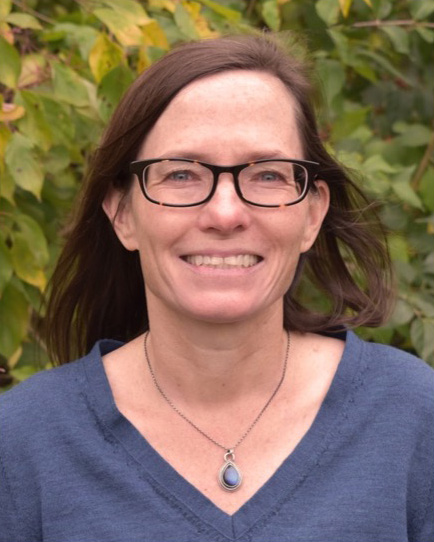 So, while it might be said that each year is the same, they are all different – even more so this year. As you may remember, last year Founding Director Chip Taylor announced that he would be stepping away from the day-to-day operations of Monarch Watch to focus on writing and other projects. We are pleased to announce that the need for a new director has been met. Dr. Kristen Baum, known for her research on monarchs and pollinators, joined us at the end of October and we are still in the process of making the transition. Kristen’s first task as Director of Monarch Watch was to put together a five-year review of our activities. That took some time and a lot of digging into records and memories which enabled Kristen to get up to speed rapidly.
So, while it might be said that each year is the same, they are all different – even more so this year. As you may remember, last year Founding Director Chip Taylor announced that he would be stepping away from the day-to-day operations of Monarch Watch to focus on writing and other projects. We are pleased to announce that the need for a new director has been met. Dr. Kristen Baum, known for her research on monarchs and pollinators, joined us at the end of October and we are still in the process of making the transition. Kristen’s first task as Director of Monarch Watch was to put together a five-year review of our activities. That took some time and a lot of digging into records and memories which enabled Kristen to get up to speed rapidly.
“It has been interesting to learn more about Monarch Watch and I continue to be amazed by Monarch Watch’s reach and impact. There are a lot of behind-the-scenes activities that I think you would be interested in learning more about as well, and we will look for more ways to share these with you soon.” – Kristen Baum, Director of Monarch Watch
You can learn more about Kristen at monarchwatch.org/about
Monarch Watch had another busy year:
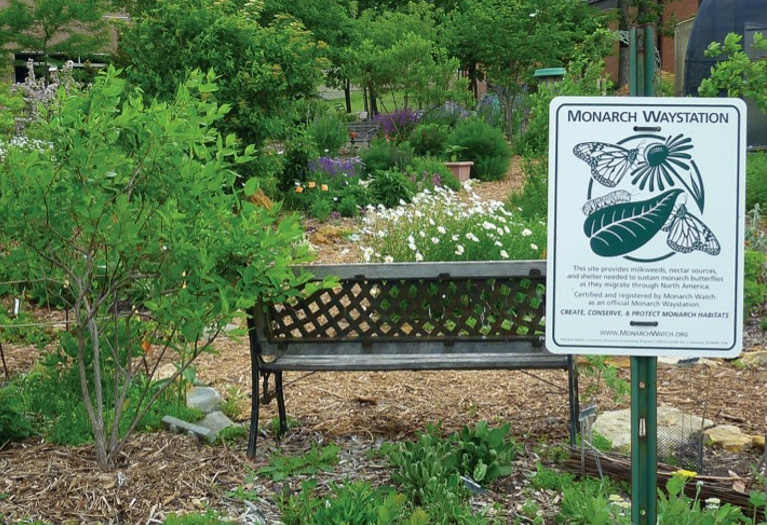 Monarch Waystations. We added more than 4,200 Monarch Waystations, bringing the total to over 46,000 registered sites. Our minimal target for next year is 50,000. Supporters can help by encouraging others to register and display our signs. If you see a sign in a prominent place, send us a photo – and a photo of your own Monarch Waystation as well! Share via monarchwatch.org/share
Monarch Waystations. We added more than 4,200 Monarch Waystations, bringing the total to over 46,000 registered sites. Our minimal target for next year is 50,000. Supporters can help by encouraging others to register and display our signs. If you see a sign in a prominent place, send us a photo – and a photo of your own Monarch Waystation as well! Share via monarchwatch.org/share
International Master Gardener Conference. Monarch Watch was a tour destination for the 2023 International Master Gardener Conference this past June. We thank the Douglas County Master Gardeners for their dedication to Monarch Waystation #1 and making it a showcase garden.
One Day. One KU. We won again. Each year after the One Day. One KU. fundraising event the Endowment Association recognizes the University unit that receives the greatest number of donations and each year we win. While we don’t receive the highest dollar amount, we have had more donors than KU Athletics three years in a row. Funds raised during this event support our work to grow and distribute milkweeds. It’s important work, and we invite you to join us again in this effort on February 15, 2024.
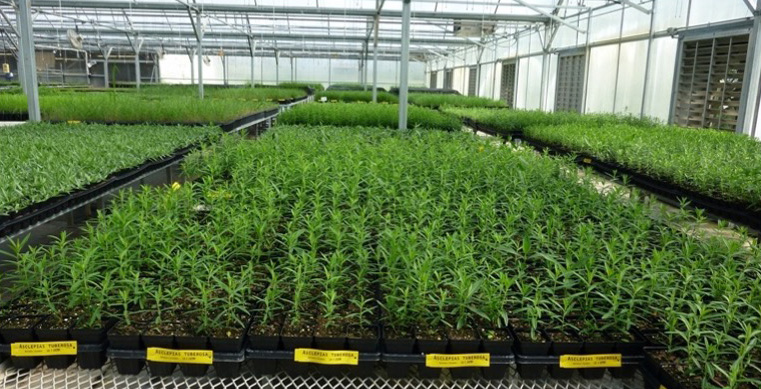 Monarch Habitat. We worked with five nurseries to produce and distribute 156,000 regionally appropriate milkweed plugs in 2023. Free milkweeds were sent to 200 schools and non-profits and to those managing restoration projects in the Midwest, Texas, and California. Many were also distributed through our Milkweed Market. We could do much more if there was additional funding to support milkweed production and distribution.
Monarch Habitat. We worked with five nurseries to produce and distribute 156,000 regionally appropriate milkweed plugs in 2023. Free milkweeds were sent to 200 schools and non-profits and to those managing restoration projects in the Midwest, Texas, and California. Many were also distributed through our Milkweed Market. We could do much more if there was additional funding to support milkweed production and distribution.
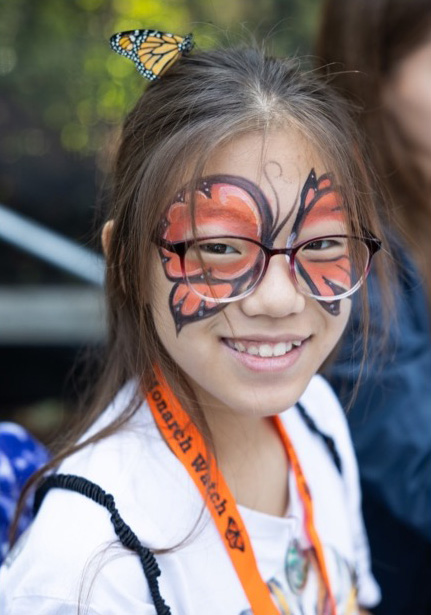 Public Events. Thanks to everyone who joined us for our free public events in the spring and fall. These family events are both fun and informative. This year the tagging event at the Baker University Wetlands Discovery Center attracted over 400 people. It was a great day, and 577 monarchs were caught, tagged, and released. We hope you will join us when we hold these events next year – Spring Open House & Plant Fundraiser (May 11); Fall Open House (September 14); Fall Tagging Event (September 21).
Public Events. Thanks to everyone who joined us for our free public events in the spring and fall. These family events are both fun and informative. This year the tagging event at the Baker University Wetlands Discovery Center attracted over 400 people. It was a great day, and 577 monarchs were caught, tagged, and released. We hope you will join us when we hold these events next year – Spring Open House & Plant Fundraiser (May 11); Fall Open House (September 14); Fall Tagging Event (September 21).
One last thing. On the 2nd of January 1975, Ken and Cathy Brugger came upon a monarch colony at Cerro Pelon, near Zitácuaro, Mexico. Although these colonies were known to local people, Ken and Cathy (now known as Catalina Trail) were the first outsiders to witness and report on this overwintering behavior. A month later, they “discovered” another concentration of monarchs at Sierra Chincua. These findings solved a long-term question about where monarchs spent the winter – a question long pursued by Fred and Norah Urquhart of the University of Toronto. Fred placed an ad in a Mexican newspaper looking for help in locating overwintering monarchs. Ken answered the ad and he and Catalina began a quest to locate monarch concentrations. 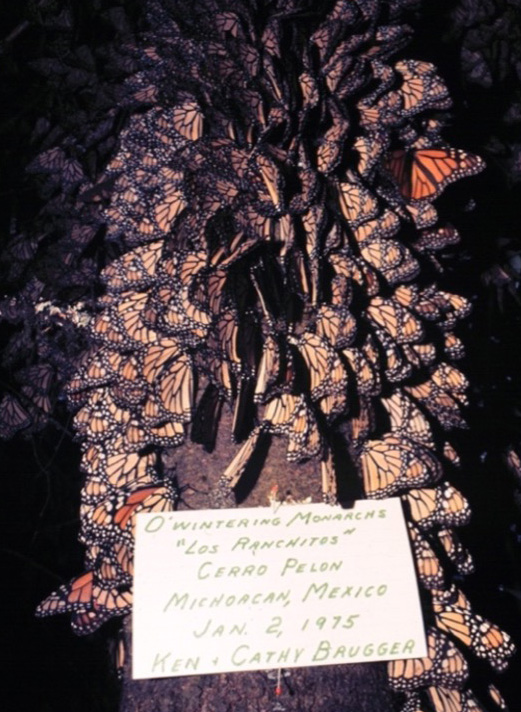 After the findings were announced, Fred and Ken were widely lauded for the achievement; however, it is now clear that Catalina played a significant role in these discoveries. The “one last thing” in this case is the magnificent feature on monarchs in the January 2024 issue of National Geographic. The article is something of a commemoration of the events in early 1975. The photography by Jaime Rojo is extraordinary and the text by Michelle Nijhuis provides a glimpse of the diverse ways many scientists, conservationists and thousands of individuals are engaged with monarchs. It’s a far cry from the singular efforts by Fred and Norah Urquhart to answer a question that had lingered since the days of C. V. Riley and others in the 1860s. The question for more than 100 years was where and how monarchs spend the winter. Now, a mere fifty years later, the question has become How can we sustain the monarch migration?
After the findings were announced, Fred and Ken were widely lauded for the achievement; however, it is now clear that Catalina played a significant role in these discoveries. The “one last thing” in this case is the magnificent feature on monarchs in the January 2024 issue of National Geographic. The article is something of a commemoration of the events in early 1975. The photography by Jaime Rojo is extraordinary and the text by Michelle Nijhuis provides a glimpse of the diverse ways many scientists, conservationists and thousands of individuals are engaged with monarchs. It’s a far cry from the singular efforts by Fred and Norah Urquhart to answer a question that had lingered since the days of C. V. Riley and others in the 1860s. The question for more than 100 years was where and how monarchs spend the winter. Now, a mere fifty years later, the question has become How can we sustain the monarch migration?
Again, thank you for your continued interest and support and we hope you will be with us again this coming year. Best wishes to you and yours for a happy and healthy holiday season!
Sincerely,

Chip Taylor, Kristen Baum, Jim Lovett, Ann Ryan, Dena Podrebarac
Team Monarch Watch
To keep up with the status of monarchs and other news, subscribe to our email updates (monarchwatch.org/subscribe), join our email discussion list (monarchwatch.org/dplex), visit our blog (monarchwatch.org/blog), and follow us on Facebook, Instagram, and X. To donate to Monarch Watch, please visit monarchwatch.org/donate
Looking back and looking forward
 In 1992, I started a small monarch tagging project with the help of Brad Williamson, a local high school science teacher. That project attracted the attention of the public and led to the creation of Monarch Watch. Although we characterized Monarch Watch as focused on education, conservation, and research, in the early years, most of our efforts involved educational outreach and research. My thought at the time was that conservation would take care of itself. I was wrong. That became apparent when I received an email from a farmer in Nebraska in 2004 who informed me that the new genetically modified crop lines he had adopted were leading to the loss of milkweeds in his corn and soybean fields and that in turn was reducing the number of monarchs on his farm. Alarmed at this news, I knew we had to shift our emphasis to conservation. Although struggling financially at the time, we decided to start the Monarch Waystation program in 2005. The program has grown, and we now have over 46 thousand registered sites. Once we became more financially secure, we began to work with nurseries to produce milkweeds that could be used in these Monarch Waystations and for restoration.
In 1992, I started a small monarch tagging project with the help of Brad Williamson, a local high school science teacher. That project attracted the attention of the public and led to the creation of Monarch Watch. Although we characterized Monarch Watch as focused on education, conservation, and research, in the early years, most of our efforts involved educational outreach and research. My thought at the time was that conservation would take care of itself. I was wrong. That became apparent when I received an email from a farmer in Nebraska in 2004 who informed me that the new genetically modified crop lines he had adopted were leading to the loss of milkweeds in his corn and soybean fields and that in turn was reducing the number of monarchs on his farm. Alarmed at this news, I knew we had to shift our emphasis to conservation. Although struggling financially at the time, we decided to start the Monarch Waystation program in 2005. The program has grown, and we now have over 46 thousand registered sites. Once we became more financially secure, we began to work with nurseries to produce milkweeds that could be used in these Monarch Waystations and for restoration. 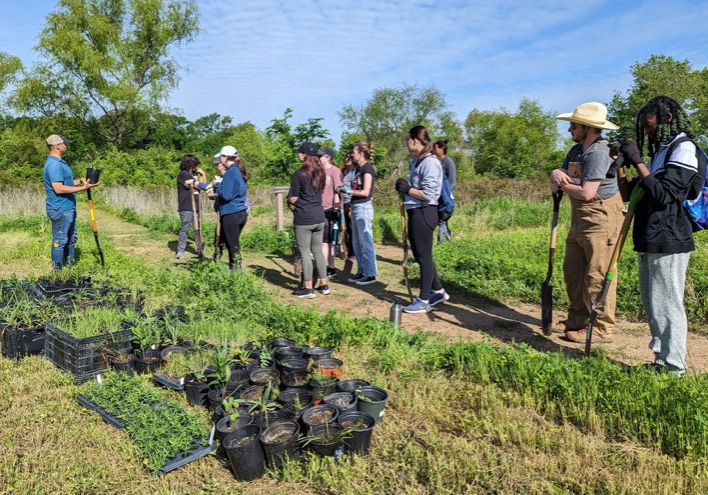 Although educational outreach and research continue, our main focus has become monarch and pollinator conservation. Over the years, we have facilitated the growth and distribution of over 1 million milkweed plugs. We were the first organization to step into this role and are proud of these efforts.
Although educational outreach and research continue, our main focus has become monarch and pollinator conservation. Over the years, we have facilitated the growth and distribution of over 1 million milkweed plugs. We were the first organization to step into this role and are proud of these efforts.
There are many challenges ahead. Our growing population and the intensification of agriculture continue to result in the loss of habitats for monarchs, pollinators, and other species that share these landscapes. Clearly, restoration projects need to increase, and we need to sustain and improve our outreach and research. Confronted with these realities, I realized that I had to assure that Monarch Watch’s role as a leading advocate for monarchs would continue. That meant stepping down as Director of Monarch Watch and finding a way to fund the salary of a new director. The solution was to create an Endowed Professorship at KU with the support of the University and the KU Endowment Association. Fortunately, my wife and I were able to contribute $1.4 million to start the Chip and Toni Taylor Professorship in Support of Monarch Watch and generous contributions received from others have brought us closer to our $3 million goal. The fund allowed the University to initiate a search for the position which resulted in the hiring of Dr. Kristen Baum, and we couldn’t be happier. Kristen is an outstanding scientist with a long history of working with monarchs, pollinators, and grasslands.
People ask me what I will be doing now that I’m retired. I’m not sure what retirement actually means, but I do know I will be contributing to Monarch Watch as long as I can. –Chip Taylor, Founding Director
In order of appearance, photos provided by: Mijeong Baek, Jenny Miner, KBS-CER, Chip Taylor, Chip Taylor, Ann Dean, Ken Brugger, Ann Ryan, and Mei Ling Liu. Thank you!


Sorry, comments for this entry are closed at this time.